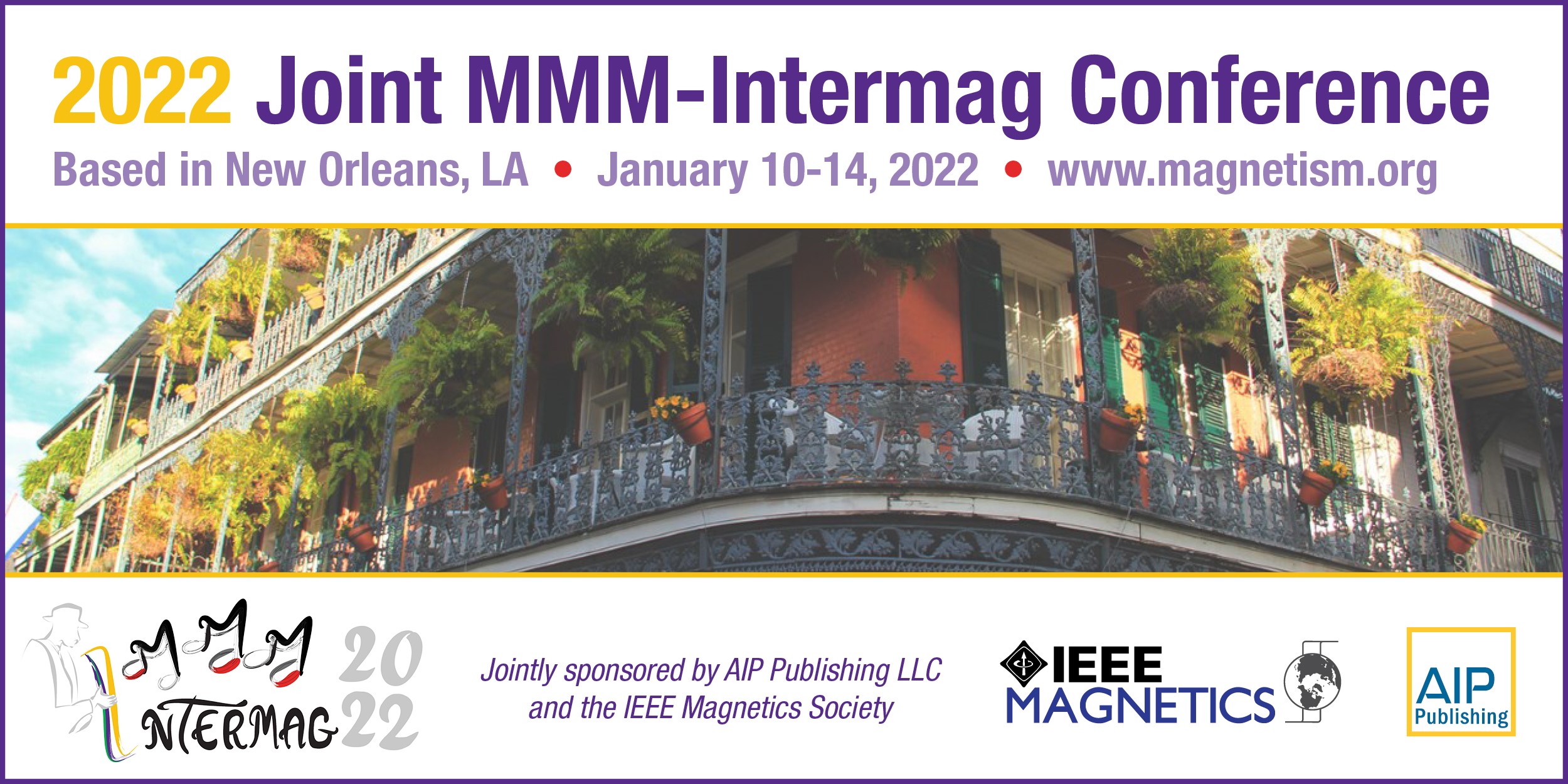
ESSIAL presentations at INTERMAG 2022
ESSIAL will take part in the INTERMAG 2022 international conference with two presentations related to the project. This year edition of INTERMAG (International Magnetics Conference) will take place in from 10 to 14 of January 2022 in New Orleans in a hybrid format with in-person presentations and prerecorded on-demand content.
On one side, ESSIAL members Manar Nesser (UPJV/LTI) and Olivier Maloberti (UniLaSalle Amiens) will make a presentation entitled: "Impact of Ultra-Short Pulsed Laser (USPL) ablation process on separated loss coefficients of Grain Oriented Electrical Steels (GOES)".
Abstract:
Pulsed Laser (PL) technology is a recent technique used to optimize the electromagnetic properties of Grain Oriented Electrical Steels (GOES) forming the cores of transformers and chokes. Like the Continuous Wave process, the long and Short Pulsed Laser (SPL) processes have been largely studied. The Ultra-Short Pulsed Laser ablation technique remains unfamiliar for these electrical steels and its deterministic impact on the performance of these materials requires deep investigations. In this paper, the influence of surface laser treatments with ultra-short pulses (Femtosecond laser) on the magnetic properties of GOES was studied using the two-temperature model for the ablation process and Bertotti’s model for magnetic losses. The aim is to understand and identify the origins of the changes in magnetic properties following laser treatment. We showed that the hysteresis and excess loss coefficients behave differently depending on the type of laser treatment and its pulse duration (long, short and ultra-short pulse).
First, we presented adjusted models to estimate the impact of the USPL on the sheet surface in terms of laser energetic quantities; more precisely the groove depth, the plasma maximum temperature, and the peak surface wave pressure were estimated, relative to an optimum. The latter physical impacts of laser pulses were then correlated to Bertotti’s loss coefficients: the static hysteresis loss coefficient and the excess loss coefficient. The laser process is not always able to reduce simultaneously both loss contributions. Thus, a compromise must be found to optimize the process. The variation of the flux density level as a function of the applied magnetic field was measured with a single sheet tester SST under a one-directional field parallel to the rolling direction. From these measurements, we deduced the whole power loss contributions and the apparent permeability. Results showed that an optimization of the laser’s parameters ensured an iron loss reduction at 50 Hz up to -30% for an induction below 0.5T, and a percentage close to -15% for an induction above 1.5T. At higher frequencies and for 0.1T, the reduction percentage can exceed -30%.
On the other side, Préscillia Dupont (JEUMONT Electric), Théo Etifier (UniLaSalle Amiens) and Oliver Maloberti (UniLaSalle Amiens) will make a presentation entitled: “Experimental identification and physical interpretations of 2D tensor magnetic properties of a Grain-Oriented electrical Steel magnetized between the rolling and the transverse directions”.
Abstract:
Grain Oriented steels are widely used in transformers and inductors. The materials texture shows an easy magnetization direction adapted to columns and yokes but, at corners when the flux is tilted, the anisotropy must be taken into account. At the quasi-static level, the anisotropy is driven by the crystal grains, demagnetizing field and mechanical stresses, and determines the permeability, the quasi-static hysteresis and the domains orientation at the equilibrium. At the dynamic level, distinct magnetization mechanisms depend on the various domains and walls orientations. It controls the iron losses in any magnetization direction. Numerous scalar models and experimental tools can already describe mainly the unidirectional behavior. The extension of scalar models towards tensor models is confronted to unknowns that remain about non-diagonal components and their microscopic physical interpretation explaining the hysteresis cycles in various directions. A dynamic hysteresis model has been chosen. It allows the description of the magnetic behavior related to the anisotropic magnetic structure at equilibrium in quasi-static operating conditions and the anisotropic magnetization mechanisms within domains and walls in dynamic operating conditions. The goal of this work is to identify and determine the tensor properties of an electrical steel, which is necessary to use an anisotropic behavioral model according to two directions of the excitation field, making an angle between 0° (Rolling Direction RD) and 90° (Transverse Direction TD) with RD. The results will be physically discussed considering the main energies that govern the quasi-static domain structure responsible for the slope of the cycles, and those inducing the magnetization mechanisms responsible for the losses, i.e. the cycles area. The experiment uses a conventional GO FeSi steel (R120-27) with a thickness of 0.27mm. Several samples with dimensions 150x150mm2 were laser cut following an accurate angle of respectively 0°, 15°, 30°, 45°, 60°, 75° and 90° with the RD. Measurements were carried out with a Single Sheet Tester which provides data for the magnetic field H and the flux density B in the two directions of the sample’s cut edges.

